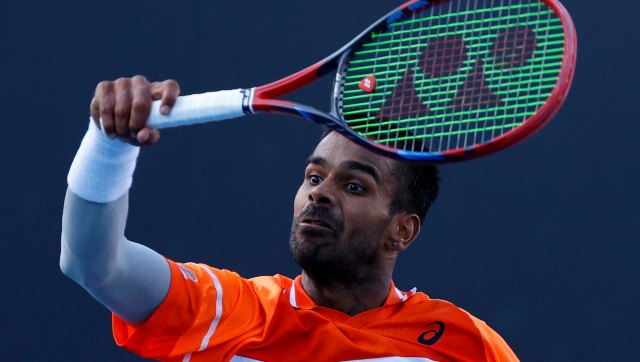In the realm of captivating stories, one might instinctively think of movies or books, but sometimes the most gripping tales unfold in real life. Particularly in the world of sports, where a unique intersection of talent, hard work and luck creates narratives that resonate deeply. Today, the spotlight shines on Sumit Nagal, a 26-year-old Indian tennis player who just made history at the Australian Open.
Nagal’s unseeded triumph over Bublik Nagal, hailing from Haryana, advanced to the second round of the prestigious tournament by defeating the 31st-seeded player Alexander Bublik. What makes this achievement extraordinary is Nagal’s unseeded status and his ATP ranking of 122. In a sport where seeding ensures top players avoid each other in early rounds, Nagal’s triumph over a seeded opponent is a rare feat for Indian tennis. In a clinical performance, Nagal secured victory in straight sets, showcasing a strategic approach that relied on his strengths and waiting for his opponent’s mistakes. This win is not just about one match; it symbolises the remarkable journey of a young man who faced adversity head-on. Nagal’s journey beyond the court Last year, Nagal was grappling with multiple injuries residing outside the top 500 rankings and dealing with financial strain with only 900 euros in his bank account. Considerations of leaving tennis lingered. Fast forward to today and Nagal stands tall in the second round of the Australian Open with a chance to progress further. His next opponent is ranked below him, potentially leading to another triumph. Even if he doesn’t win, Nagal is set to walk away with a significant prize of around 180,000 Australian dollars, a far cry from the financial struggles he faced just a year ago. Tennis in India Reflecting on Nagal’s journey raises broader questions about the state of tennis in India. Unlike cricket or football, tennis demands a substantial financial investment. A beginner’s racquet alone costs Rs4,000 and individual training at top tennis academies can amount to Rs25,000 per month. Tennis is not a sport that can be played anywhere. It requires specialised training, equipment, and infrastructure. This lack of accessibility poses a significant challenge for aspiring players and their families. Moreover, the absence of a comprehensive pipeline for identifying and nurturing talent compounds the difficulties faced by Indian tennis players. While cricket has the BCCI organising regional competitions and investing in promising players, tennis lacks a similar structured support system. Most successful Indian tennis stars, including Nagal, have honed their skills abroad due to the inadequacies in the Indian system. Limited tournaments, fewer quality coaches, and inadequate facilities further hinder the growth of tennis in the country. Lessons from badminton Drawing parallels with badminton, where Pullela Gopichand’s academy has produced champions, some argue that Indian tennis needs a similar figure to create a pipeline for talent development. This raises the question: could a dedicated system be the solution to India’s tennis woes? While answers to this question remain elusive, what is clear is that sporting success requires more than individual efforts. The cases of Serbia and Novak Djokovic demonstrate how a successful athlete can put a country on the global map inspiring a generation and garnering support. India boasts talent and a passionate audience, but a more robust system is needed to propel its tennis players to international acclaim. Nagal’s journey serves as a reminder that with the right infrastructure and support, India can produce champions who bring glory to the nation. The question now is whether the country can establish a system that nurtures and elevates its tennis stars to compete on the global stage. Views expressed in the above piece are personal and solely that of the author. They do not necessarily reflect Firstpost’s views. Read all the Latest News , Trending News , Cricket News , Bollywood News , India News and Entertainment News here. Follow us on Facebook, Twitter and Instagram.


)

)
)
)
)
)
)
)
)



